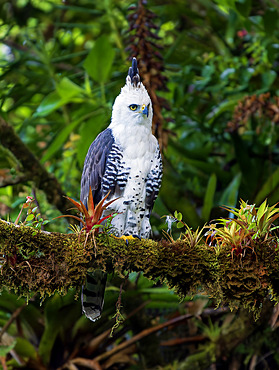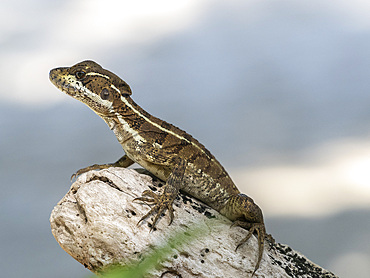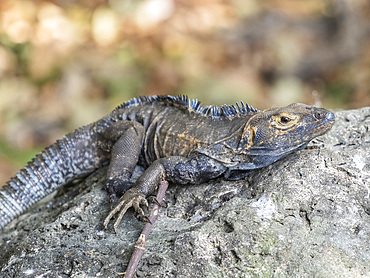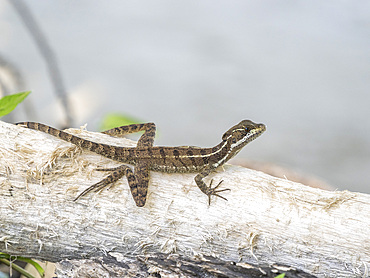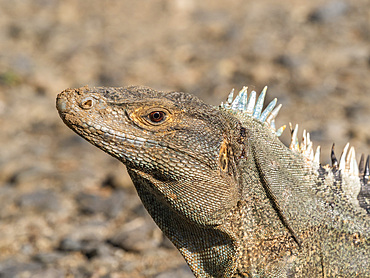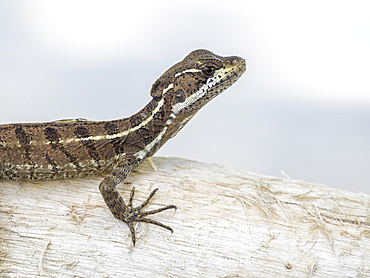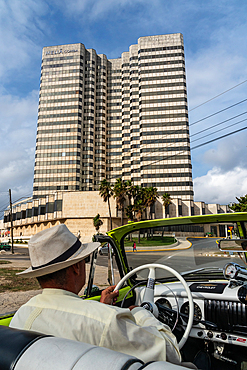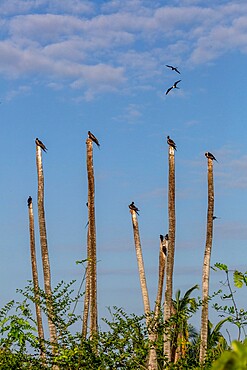Recent searches
Loading...
1382-271 - Panama City seen from Corredor Sur the highway that links it with the International Airport,Republic of Panama,Central America
1382-270 - view toward the Marbella area from the Trump Ocean Club International Hotel and Tower Panama,Punta Pacifica area,Panama City,Republic of Panama,Central America
1382-269 - Trump Ocean Club International Hotel and Tower Panama,Punta Pacifica area,Panama City,Republic of Panama,Central America
1382-268 - view from the Trump Ocean Club International Hotel and Tower Panama,Punta Pacifica area,Panama City,Republic of Panama,Central America
1382-267 - view over the Paitilla area from the Trump Ocean Club International Hotel and Tower Panama,Punta Pacifica area,Panama City,Republic of Panama,Central America
1382-266 - Diablo Rojo_Red Devil,bus in Panama,Panama City,Republic of Panama,Central America
1382-264 - Bridge of the Americas,Panama City,Republic of Panama,Central America
1382-265 - overview of Panama City from the top of Ancon Hill,,Republic of Panama,Central America
1382-263 - Port of the Canal seen from Ancon Hill,Panama City,Republic of Panama,Central America
1382-262 - Port of the Canal seen from Ancon Hill,Panama City,Republic of Panama,Central America
1382-261 - man leaning on the guardrail of an house on stilts at Cayo Coral, southern headland of Bastimentos Island,Bocas del Toro Archipelago,Republic of Panama,Central America
1382-260 - wooden houses on stilts of Bocas del Toro town,Colon Island,Bocas del Toro Archipelago,Republic of Panama,Central America
1382-259 - wooden houses on stilts of Bocas del Toro town,Colon Island,Bocas del Toro Archipelago,Republic of Panama,Central America
1382-258 - bar and restaurant on stilts at dusk,Playa Tortuga hotel,Colon Island,Bocas del Toro Archipelago,Republic of Panama, Central America
1382-257 - bar and restaurant on stilts at dusk,Playa Tortuga hotel,Colon Island,Bocas del Toro Archipelago,Republic of Panama, Central America
1382-256 - Punta Caracol Acqua Lodge hotel,Bocas town,Colon Island,Bocas del Toro Archipelago,Republic of Panama,Central America
1382-255 - Boca del Drago,Colon Island,Bocas del Toro Archipelago,Republic of Panama,Central America
1382-254 - seabirds Tropicbirds,Pajaros Islet also named Swan's Cay off the coast of Boca del Drago on Colon Island,Bocas del Toro Archipelago,Republic of Panama,Central America
1382-253 - Pajaros Islet also named Swan's Cay off the coast of Boca del Drago on Colon Island,Bocas del Toro Archipelago,Republic of Panama,Central America
1382-252 - watching tower of the Gamboa Resort situated at the confluence of the Chagres River and the Canal,Republic of Panama,Central America
1382-251 - aerial view over the Chagres River from the watching tower of the Gamboa Resort,Republic of Panama,Central America
1382-250 - boat trip on the Chagres River,Republic of Panama,Central America
1382-249 - Panama Canal Railway crossing over the Chagres River,Republic of Panama,Central America
1382-248 - Florisuga mellivora,White-necked Jacobin hovering ,Soberania National Park, Republic of Panama,Central America
1382-246 - thatched houses in a village of Embera native community living by the Chagres River within the Chagres National Park,Republic of Panama,Central America
1382-247 - men of Embera native community living by the Chagres River within the Chagres National Park,Republic of Panama,Central America
1382-245 - thatched houses in a village of Embera native community living by the Chagres River within the Chagres National Park,Republic of Panama,Central America
1382-244 - flute player and little girl, Embera native community living by the Chagres River within the Chagres National Park,Republic of Panama,Central America
1382-243 - Esilda and her friends making basket, young teenagers of Embera native community living by the Chagres River within the Chagres National Park,Republic of Panama,Central America
1382-241 - dishes of fish wrapped in leaves, Embera native community living by the Chagres River within the Chagres National Park,Republic of Panama,Central America
1382-242 - thatched houses in a village of Embera native community living by the Chagres River within the Chagres National Park,Republic of Panama,Central America
1382-240 - thatched house in a village of Embera native community living by the Chagres River within the Chagres National Park,Republic of Panama,Central America
1382-239 - family from Embera native community living by the Chagres River within the Chagres National Park,Republic of Panama,Central America
1382-237 - watermelon display for sale on the roadside,Republic of Panama,Central America
1382-238 - Diablo Rojo_Red Devil,bus in Panama,Colon,Republic of Panama,Central America
1382-236 - Panama Canal Railway that links the Atlantic Ocean, Colon, to the Pacific Ocean, Panama City,Republic of Panama,Central America
1382-235 - passenger train parked at Colon station,Panama Canal Railway that links the Atlantic Ocean, Colon, to the Pacific
1382-234 - village of Portobelo,Colon Province,Republic of Panama,Central America
1382-233 - Diablo Rojo_Red Devil,bus in Panama,Portobelo,Republic of Panama,Central America
1382-232 - village of Portobelo,Colon Province,Republic of Panama,Central America
1382-230 - Diablo Rojo_Red Devil,bus in Panama,Colon,Republic of Panama,Central America
1382-231 - battery and ruins of the fort of Portobello,Colon Province,Republic of Panama,Central America
1382-229 - tug boat crossing the Panama Canal Gatun locks,Republic of Panama,Central America
1382-228 - container-ship crossing the Panama Canal Gatun locks,Republic of Panama,Central America
1382-227 - Diablo Rojo_Red Devil,bus in Panama,Colon,Republic of Panama,Central America
1382-225 - street in Casco Antiguo the historic district of Panama City,Republic of Panama,Central America
1382-226 - swimming pool by the beach of the Westin Playa Bonita hotel,Panama City,Republic of Panama,Central America
1382-224 - skyline of the new city,Panama City,Republic of Panama,Central America
1382-223 - Trump Ocean Club International Hotel and Tower Panama,Punta Pacifica area,Panama City,Republic of Panama,Central America
1382-222 - yellow cab in a street in San Francisco area,Panama City,Republic of Panama,Central America
1382-220 - ruins of the archaelogical site of Panama Viejo,Panama City,Republic of Panama,Central America
1382-221 - the new city skyline seen from Panama Viejo,Panama City,Republic of Panama,Central America
1382-219 - bust of Pedro Arias de Avila (1440-1531),founder of the city of Panama in 1519, at the visitors center of Panama Viejo,Panama City,Republic of Panama,Central America
1382-218 - The Cinta Costera or Malecon, a new road and promenade built on reclaimed land from the bay of Panama, Panama City, Republic of Panama,Central America
1382-217 - The Cinta Costera or Malecon, a new road and promenade built on reclaimed land from the bay of Panama, Panama City, Republic of Panama,Central America
860-292183 - Ornate Hawk-Eagle (Spizaetus ornatus), juvenile, Chiriqui Highlands, Panama
860-292182 - Ornate Hawk-Eagle (Spizaetus ornatus), juvenile, Chiriqui Highlands, Panama
1112-7536 - Adult golden silk spider (Trichonephila clavipes), within its web on Coiba Island, Panama, Central America
1112-7535 - An adult black spiny-tailed iguana (Ctenosaura similis), on the ground on Barro Colorado Island, Panama, Central America
1112-7534 - Adult great-tailed grackle (Quiscalus mexicanus), perched in a tree on Coiba Island, Panama, Central America
1112-7533 - An adult black vulture (Coragyps atratus), perched in a tree on Barro Colorado Island, Panama, Central America
1112-7531 - An adult black spiny-tailed iguana (Ctenosaura similis), on the ground on Barro Colorado Island, Panama, Central America
1112-7532 - Shipping and lock, Panama Canal, Panama, Central America
1112-7530 - Adult tropical kingbird (Tyrannus melancholicus), perched in a tree on Coiba Island, Panama, Central America
1112-7529 - Adult Central American agouti (Dasyprocta punctata), on Coiba Island, Panama, Central America
1112-7528 - Juvenile common basilisk (Basiliscus basiliscus), on a tree on Coiba Island, Panama, Central America
1112-7527 - An adult black vulture (Coragyps atratus), perched in a tree on Barro Colorado Island, Panama, Central America
1112-7526 - An adult black spiny-tailed iguana (Ctenosaura similis), on the ground on Barro Colorado Island, Panama, Central America
1112-7525 - Juvenile common basilisk (Basiliscus basiliscus), on a tree on Coiba Island, Panama, Central America
1112-7524 - An adult black spiny-tailed iguana (Ctenosaura similis), on the ground on Barro Colorado Island, Panama, Central America
1112-7523 - Juvenile common basilisk (Basiliscus basiliscus), on a tree on Coiba Island, Panama, Central America
1112-7522 - Panama's Centennial Bridge at sunset crossing the Panama Canal, Panama, Central America
1112-7520 - Adult male magnificent frigatebird (Fregata magnificens), on its nest, Iguana Island, Panama, Central America
1112-7521 - An adult black spiny-tailed iguana (Ctenosaura similis), on the ground on Barro Colorado Island, Panama, Central America
1112-7519 - An adult brown booby (Sula leucogaster) in flight, near Coiba Island, Panama, Central America
860-291669 - Neotropical Green Anole (Norops biporcatus)
1350-6678 - Strawberry Poison Frog (Dendrobates pumilio), adult, Bastimentos National Park, Bocas del Toro, Panama. The strawberry poison frog or strawberry poison-dart frog (Oophaga pumilio or Dendrobates pumilio) is a species of small amphibian poison dart frog found in Central America. It is common throughout its range, which extends from eastern central Nicaragua through Costa Rica and northwestern Panama. The species is often found in humid lowlands and premontane forest, but large populations are also found in disturbed areas such as plantations. The strawberry poison frog is perhaps most famous for its widespread variation in coloration, comprising approximately 15���30 color morphs, most of which are presumed to be true-breeding. O. pumilio, while not the most poisonous of the dendrobatids, is the most toxic member of its genus. The species is most diverse in Panama with varieties in vivid shades of all red, orange, blue, yellow or green, green and yellow, white with red, orange or black and spotted varieties. The most colorful mix is found in Isla Bastimentos Marine National Park though not all in one place. Colors vary by location. A beach on the north side of the island is named after the species. Two of Southern Explorations' Panama tours visit red frog habitat. Both the eight-day Panama Adventure trip and eleven-day Panama Highlights trip spend time in Isla Bastimentos Marine National Park and the former also goes to Red Frog Beach.
The red frog is not as poisonous as some of its cousins and is not a threat to humans. It subsists on a diet of ants that dine on poisonous plants, providing the red frog its protective skin toxin. Males attract females with a loud quick chirp. To hear the distinctive sound before you depart on your Panama tours, go to the University of Michigan Museum's biodiversity website (www.animaldiversity.ummz.umich.edu.) After birth, the tadpoles climb aboard the mother who deposits them in different protected areas where she retu
450-4476 - Driver with panama hat in green open top Chevrolet classic car driving through city, Havana, Cuba (Model Release)
860-291193 - Brown-throated Three-toed Sloth (Bradypus variegatus), Panama
860-291194 - Brown-throated Three-toed Sloth (Bradypus variegatus), Panama
860-289945 - Fruit-piercing moth (Eudocima homaena), Caterpillar, Sinharaja Forest Reserve, Sri Lanka
860-290000 - Flannel moth (Acharia stimulea), caterpillar, Panama
860-289663 - White-faced Capuchin (Cebus imitator), female with infant, Lake Gatun, Panama
860-290116 - Mantled Howler Monkey (Alouatta palliata) male in a tree, Soberania National Park, Panama
860-289658 - Brown-throated Three-toed Sloth (Bradypus variegatus), Panama
860-289662 - White-faced Capuchin (Cebus imitator), Lake Gatun, Panama
1174-9920 - Young mixed race woman in a panama hat seated
1174-9939 - Young woman in a panama hat seated in a rooftop garden
1174-9921 - Young mixed race woman in a panama hat seated taking a selfie, making a face
1112-5873 - Adult female common basilisk (Basiliscus basiliscus), Coiba Island, Coiba National Park, Panama, Central America
1112-5871 - Adult red-legged honeycreeper (Cyanerpes cyaneus), Gamboa, Gatun Locks, Panama, Central America
1112-5869 - Magnificent frigatebirds (Fregata magnificens), perched on palm trees, Isla Iguana Wildlife Refuge, Panama, Central America
1112-5870 - Adult crested guan (Penelope purpurascens), Barro Colorado Island, Gatun Lake, Panama, Central America
1112-5876 - Ships in transit in the Miraflores Locks towards Lake Gatun, near Gamboa, Panama Canal, Panama, Central America
1112-5872 - Adult female common basilisk (Basiliscus basiliscus), Coiba Island, Coiba National Park, Panama, Central America
1112-5877 - Cargo ships being loaded on Lake Gatun, near Gamboa, Panama Canal, Panama, Central America
1112-5874 - Adult mantled howler (Alouatta palliata), Barro Colorado Island, Gatun Lake, Panama, Central America
1112-5875 - Ships in transit in the Miraflores Locks towards Lake Gatun, near Gamboa, Panama Canal, Panama, Central America
832-389123 - Aerial view, tropical mangrove islands in the Caribbean, Escudo de Veraguas, Panama, Central America
832-389125 - Aerial view, tropical mangrove islands in the Caribbean, Escudo de Veraguas, Panama, Central America























































